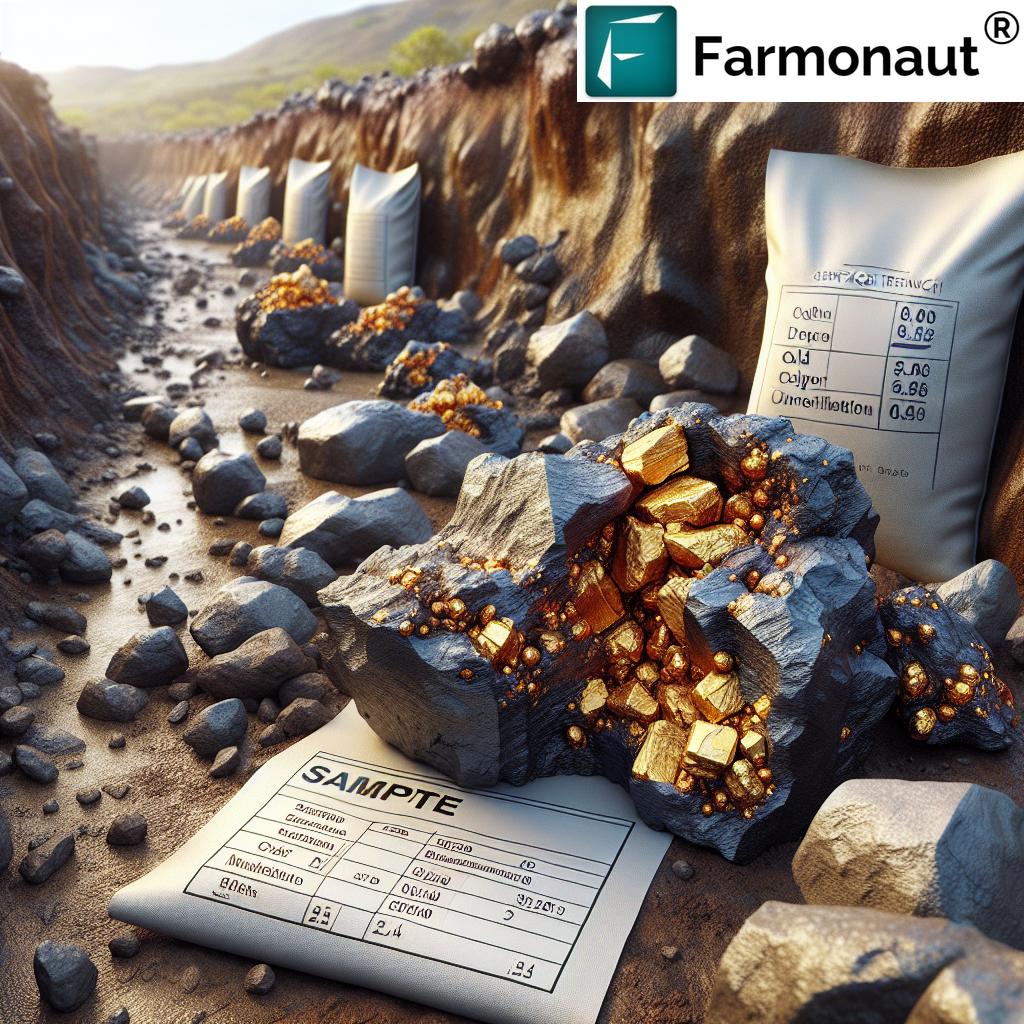Dangers of Lithium Mining: 7 Key South America Risks (2025)
“Lithium mining in South America uses up to 2 million liters of water per ton of lithium extracted.”
Summary: Environmental and Socioeconomic Dangers of Lithium Mining in 2025
As global demand for lithium surges, driven by the electrification of transport and the proliferation of renewable energy storage systems, lithium mining has become a critical industry—especially across South America’s Lithium Triangle (Argentina, Bolivia, Chile). However, the dangers of lithium mining extend well beyond its role in green technologies. Extraction processes frequently threaten water, agriculture, forestry, and the very fabric of local communities, particularly in vulnerable regions by 2025.
The most significant environmental impacts include water scarcity and soil degradation, which compromise surrounding agricultural regions, endanger food security for farmers, and reduce biodiversity within forests. Pollution, chemical contamination, and air quality degradation imperil nearby rural communities, disrupt traditional practices, and contribute to socioeconomic tension among indigenous groups. As the world seeks sustainable solutions, recognizing and mitigating the dangers of lithium mining is essential for balanced development.
Understanding the Global Surge in Lithium Demand
Demand for lithium is increasing rapidly, fueled largely by the shift toward electric vehicles (EVs), renewable energy storage systems, and digital devices reliant on lithium-ion batteries. The Green Transition, underpinned by these technologies, is projected to make lithium the world’s most sought-after critical mineral by 2025.
- The electrification of transport is a principal driver, as nations transition away from fossil fuels and towards green alternatives.
- The proliferation of energy storage systems in both grid and off-grid applications amplifies the urgency to secure reliable lithium supplies.
- South America’s Lithium Triangle, containing more than half of the world’s known lithium reserves, has become the epicenter of global extraction and associated risks.
The dangers of lithium mining are not abstract or distant—they are real, persistent, and deeply enmeshed in the physical and socioeconomic landscapes of South America.
Key Extraction Methods: Hard Rock vs Brine—South America in Focus
Lithium extraction occurs primarily via two methods, each with distinct but pronounced environmental impacts on surrounding ecosystems:
-
Hard Rock Mining (Spodumene):
Extracting lithium from spodumene ores via open-pit mines is resource and energy-intensive. This method causes deforestation, soil erosion, and loss of biodiversity in adjacent forests, while also fragmenting habitats and disrupting local climate conditions essential for sustaining agricultural ecosystems. Deforestation near mining sites is particularly damaging in arid locations, exacerbating climate changes. -
Brine Extraction:
In brine extraction, lithium-rich saline groundwater is pumped out from underground reservoirs to large evaporation ponds. This process is dominant across the Lithium Triangle (northern Chile, Argentina, southern Bolivia)—arid to semi-arid regions with already limited water resources. Extracting one ton can require up to 2 million liters (about 500,000 gallons) of water, intensifying water scarcity and threatening the sustainability of local agriculture and forestry.
Both extraction methods lead to lowered water availability for local farmers and livestock owners, threaten food security, and often result in contamination of the soil and water near mining sites.
“By 2025, 65% of lithium mines in South America risk affecting local agriculture due to groundwater depletion.”
Dangers of Lithium Mining: 7 Critical South America Risks (2025)
The dangers of lithium mining in South America for 2025 and beyond revolve around seven key risks. Viewed through the lens of sustainability and environmental responsibility, each of these risks poses significant threats to water availability, agriculture, forestry, and the livelihoods of nearby communities.
-
1. Water Depletion and Scarcity in Arid Regions
Lithium brine extraction consumes vast amounts of water—up to 2 million liters per ton. In the Lithium Triangle (spanning parts of Argentina, Bolivia, Chile), vast withdrawals from delicate underground aquifers lead to reduced availability of water for farmers, livestock, and rural communities. This intensifies existing water shortages, particularly in already arid locations.
Groundwater levels near mining sites drop, leading to jeopardized food security and threatening traditional agricultural practices among indigenous and rural communities. Reduced water means lower crop yields and diminished pasturelands.
-
2. Soil Salinization and Degradation of Productive Soils
Discharge of extracted brines—usually high in salts and chemicals—changes the salinity of both soil and water, leading to the degradation of productive soils, a decline in crop yields, and loss of biodiversity. Salinization is one of the most insidious side effects, as it may take years before impacts become visible, but is often irreversible.
Productive soils surrounding brine projects often suffer, resulting in lower food production and broader impacts on local food systems—a critical issue in rural South America.
-
3. Agricultural and Forestry Impacts
Water withdrawal and changes in soil chemistry directly threaten agricultural regions adjacent to mining sites. With reduced water availability and salinity changes, farmers’ ability to irrigate crops and manage pasturelands for livestock is compromised.
- Loss of forest cover due to mine expansion, clearing, and infrastructure development further fragments animal habitats and affects microclimates essential for sustainable agriculture.
- Both subsistence and commercial farmers in the region face lowered productivity and increased risk of food insecurity.
-
4. Threats to Biodiversity and Forest Ecosystems
Deforestation for mine infrastructure, access roads, and evaporation ponds—especially via open-pit mining—causes habitat fragmentation and threatens local wildlife. The Lithium Triangle is home to unique forests and wetlands that play a crucial role in global biodiversity. Reduction in forest cover often has pronounced effects on local climate conditions, impacting life beyond direct mining areas.
-
5. Chemical Pollution and Contamination Risks
The use of hydrochloric acid, lime, solvents, and other chemicals in lithium extraction and processing creates contamination risks for local soils and water. Improper disposal, spills, or leakages can lead to pollution and long-lasting damage to both terrestrial and aquatic systems.
Farmers and rural communities near these sites are often first to experience the consequences, from the loss of fish and aquatic life to outbreaks of disease and respiratory issues caused by airborne particulates.
-
6. Socioeconomic Disruption and Infrastructure Pressure
Mining expansion brings an influx of workers and demands additional infrastructure. This strains local roads, health, and water systems, often without proportional benefit to communities.
Indigenous groups and rural populations may face land dispossession, disruption to traditional practices, and inequitable sharing of mining proceeds. The strain on cultural coherence and social frameworks can lead to conflict and migration.
-
7. Water Conflicts and Resource Insecurity
As water becomes more scarce, conflicts emerge among stakeholders—miners, farmers, local governments, and indigenous leaders. With groundwater depletion projected to worsen by 2025, disputes over resource allocation will likely increase.
These conflicts threaten long-term regional stability, undermining sustainable development goals and community well-being.
Comparative Impact Table on Lithium Mining Risks
| Risk Category | Estimated Impact Level (1–5) | Directly Affected Regions (2025 projection) | Estimated Annual Water Use (Million m³) | Potential Agricultural Loss (%) | Key Stakeholders Impacted |
|---|---|---|---|---|---|
| Water Depletion & Scarcity | 5 | Chile (Atacama), Argentina (Salta, Jujuy), Bolivia (Potosí) | ~60–80* | 32–48* | Farmers, Indigenous Communities, Local Residents |
| Soil Salinization & Degradation | 4 | Evaporation pond zones, surrounding agriculture belts | 10–20* | 20–30* | Farmers, Ecologists, Food Producers |
| Agricultural & Forestry Impacts | 5 | Lithium Triangle borderlands, fringe agriculture | 40–65* | 25–45* | Agricultural Cooperatives, Livestock Owners |
| Biodiversity & Forest Loss | 4 | Protected forests near mining sites (Andes foothills) | n/a | n/a | Environmental NGOs, Park Rangers, Local Wildlife |
| Chemical Pollution | 4 | Downstream rivers, saline lakes, near mining operations | 10–15* | 10–12* | Local Communities, Fishermen, Water Utilities |
| Socioeconomic Disruption | 5 | Mining towns, border villages, rural hamlets | n/a | Up to 20* | Indigenous People, Rural Families, Policy Makers |
| Water Conflicts & Resource Wars | 5 | Multi-jurisdictional aquifers, inter-basin regions | n/a | Indirect impacts | Government, Local Farmers, Miners, NGOs |
*Estimated from 2025 projections based on industry and academic sources.
Socioeconomic Impacts on Local Communities
While the environmental dangers of lithium mining are evident, the deeper socioeconomic consequences are equally concerning, especially when viewed through the lens of agriculture, rural communities, and indigenous practices in 2025 and beyond.
- Displacement and Land Dispossession: Many lithium reserves are beneath indigenous territories or smallholder farmland. Mine expansion and associated infrastructure can push rural and indigenous residents off ancestral lands, breaking long-standing agricultural traditions and cultural ties.
- Uneven Economic Benefits: While global investors and mining corporations profit handsomely, the direct benefits for local communities are often limited. Small farmers and indigenous groups commonly receive inadequate compensation, while their primary resources and means of survival—land, water, forests—sustain irreversible damage.
- Stress on Local Infrastructure: A sudden population influx for mining operations puts immense pressure on already fragile health, water, and road networks. These strains disrupt economic life and essential services for residents, leading to increased poverty and social tension.
- Loss of Agricultural Livelihoods: With water scarcity and soil degradation, local farmers experience lower crop yields and may be forced out of agriculture altogether—compromising food security and deepening poverty cycles.
- Cultural Erosion: Traditional agricultural and forestry practices, community rituals, and indigenous knowledge systems are threatened as rural populations are displaced and the environment that sustains them is degraded.
– empowering agricultural producers, miners, and buyers to verify product journeys, ensure supply chain transparency, and reinforce consumer trust through end-to-end tracking.
Farmonaut’s Role: Sustainable Mining Monitoring and Beyond
Satellite-based monitoring and digital innovations are transforming how we approach the dangers of lithium mining. At Farmonaut, we leverage multispectral satellite imagery, artificial intelligence, and real-time data solutions to address the environmental and operational risks across lithium mining, agriculture, and rural infrastructure.
- Environmental Impact Tracking: Our platform enables governments, businesses, and local stakeholders to measure and track carbon footprints and environmental impacts for sustainable mining and agriculture sector compliance.
- AI-Driven Advisory with Jeevn: We deliver real-time insights on farm and mine health, weather, water use, and environmental status, helping users and policy-makers optimize operations while minimizing environmental harm.
- Resource & Fleet Management: Our fleet management tools enhance logistics for mining and agriculture businesses, maximizing operational efficiency without compromising environmental standards. Learn more here.
- Blockchain Traceability: We facilitate transparency for lithium mining supply chains, agricultural production, and forest products—building trust, preventing fraud, and enabling responsible resource use.
- Insurance, Lending & Verification: Financial institutions rely on our satellite-driven monitoring for crop loans and mining insurance, reducing risk for both lenders and borrowers.
API users can integrate real-time lithium mining risk intelligence, environmental, and agricultural data directly into their own platforms via the Farmonaut API. Review developer documentation for easy integration.
Satellite-driven insights empower all stakeholders—companies, governments, and individuals—to address water scarcity, mitigate ecosystem impacts, track pollution, and foster inclusive, sustainable mining. At Farmonaut, our goal is to make these actionable insights accessible and affordable for everyone, supporting better decisions on both agriculture and mining fronts.
Innovations, Solutions, and a Path to Sustainable Lithium Mining
Recognizing the dangers of lithium mining is only the first step; mitigating risks and paving the way for sustainable mining demands innovative strategies, transparent monitoring, and inclusive community engagement. Looking toward 2025 and beyond, the following technologies and practices are emerging as critical to the region’s future:
- Direct Lithium Extraction (DLE) Technologies: DLE processes use chemical or mechanical adsorption to extract lithium with reduced water and chemical usage. When scaled, these methods could dramatically lower impact on arid South American regions, lessening pressure on local aquifers and agricultural systems.
- Closed-Loop Water Recycling: Innovations in mine design that allow for near-total water recycling and reduced brine pond reliance will be essential for long-term viability of mining in water-stressed zones.
- Robust Environmental Regulation: Governments and local authorities must enforce stringent regulations to support responsible mining practices, including pollution limits, habitat restoration mandates, and transparent public consultation processes.
- Blockchain Traceability and Data Transparency: Digital tracking from site-of-origin to end product, such as that supported by Farmonaut’s traceability platform, will become industry standard for ethical, sustainable, and fraud-proof mining and agricultural supply chains.
- Empowering Local Stakeholders: Involving indigenous communities and rural farmers in mining decisions ensures traditional knowledge is respected and economic gains distributed more equitably.
- Restorative Land Use Planning: After mine closure, regions must invest in reforestation, habitat restoration, and conversion of former mining sites into productive agricultural or protected biodiversity zones.
enables agribusinesses and cooperatives to efficiently track crop, water, and soil metrics via easy-to-use satellite monitoring—empowering smarter, more sustainable practices for 2025 and beyond.
FAQs on Dangers of Lithium Mining
Q1: Why is water scarcity such a major issue with lithium mining in South America?
The brine extraction method, most common in the Lithium Triangle (Argentina, Bolivia, Chile), consumes vast amounts of water by pumping saline groundwater to surface evaporation ponds. In arid regions, this rapidly depletes aquifers, reducing water available for farmers, pastoralists, local residents, and surrounding biodiversity.
Q2: What are the primary dangers of lithium mining for agriculture and forestry?
Key dangers include reduced water for irrigation, increased salinity in productive soils, loss of pasture and cropland, deforestation for mine expansion, and damage to forest microclimates necessary for healthy agriculture.
Q3: How does chemical pollution occur in lithium extraction?
Lithium extraction uses various chemicals—hydrochloric acid, lime, solvents—that can spill or leak, contaminating local soils, groundwater, and rivers. These pollutants can harm aquatic and terrestrial life, disrupt food chains, and cause diseases among workers and communities near mining sites.
Q4: What role can satellite monitoring play in reducing mining risks?
Satellite-based monitoring provides real-time insights into water use, land cover changes, ecosystem health, and environmental impacts. Platforms like Farmonaut make these insights accessible to farmers, miners, and regulators, supporting early detection of risk and more sustainable decision-making.
Q5: Can lithium mining be sustainable for local communities in 2025 and beyond?
With advances like DLE, closed-loop water systems, blockchain traceability, restoration, and technology-enabled oversight, the industry can lower its footprint. Crucially, mining should only proceed where water, soil, and local community rights can be protected, and where benefits are distributed equitably.
Conclusion: Building a Responsible Future
The dangers of lithium mining in South America—especially as we look to 2025 and beyond—stem from the confluence of soaring global demand, water-intensive extraction methods, and fragile rural-ecological systems. While lithium is essential for renewable energy and the green transition, its extraction must not come at the irreversible expense of water, agricultural security, forests, and the dignity of local communities.
Through satellite-based monitoring, blockchain traceability, and a commitment to sustainable practices, we can safeguard both lithium supply and environmental integrity. Now, more than ever, a responsible balance between technology, industry, agriculture, and community well-being is not only possible—it’s non-negotiable for a livable, sustainable planet in 2025 and the years ahead.
For real-time, affordable environmental and mining insights, visit the official Farmonaut platform.













